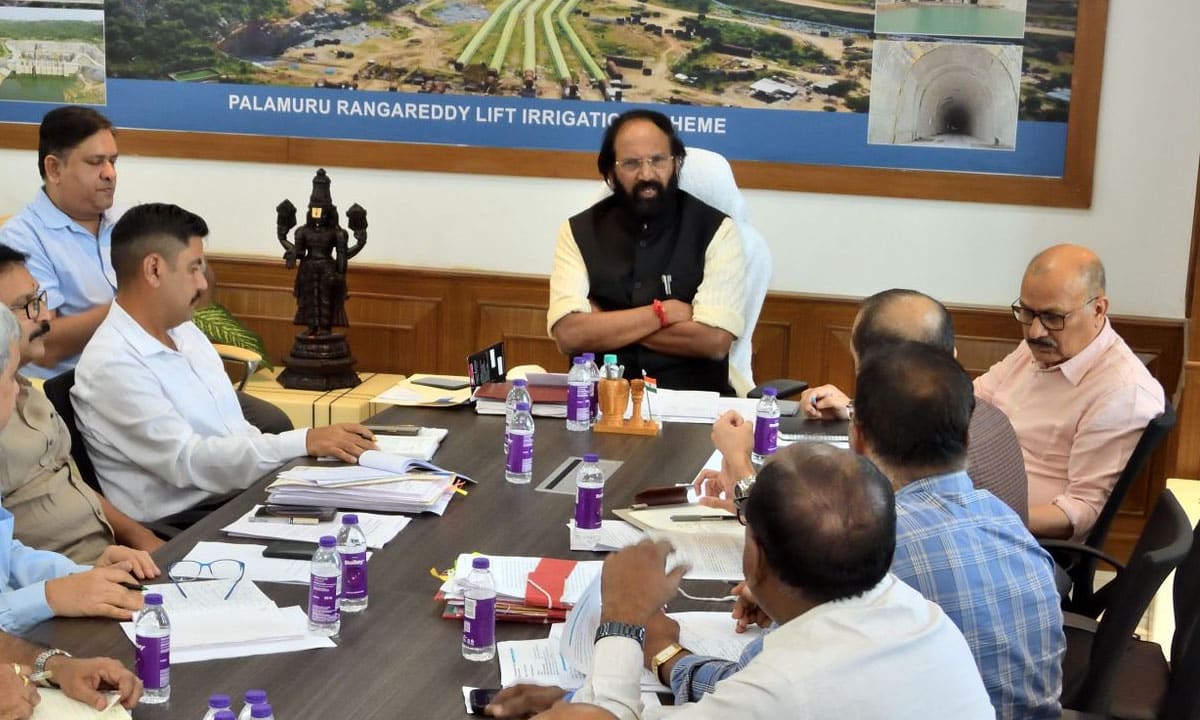Telangana Govt Explores Cost-Effective Alternative for Pranahita–Chevella Project, Says Uttam Kumar Reddy
Chairing a detailed review meeting on irrigation projects at the Secretariat here on Monday, the Minister said the government had studied the feasibility of a revised alignment through the Sundilla Link

Hyderabad: Minister for Irrigation and Civil Supplies N. Uttam Kumar Reddy said the State government has examined cost-efficient alternatives to revive the Dr. B. R. Ambedkar Pranahita–Chevella Sujala Sravanthi project in a technically and financially sustainable manner.
Chairing a detailed review meeting on irrigation projects at the Secretariat here on Monday, the Minister said the government had studied the feasibility of a revised alignment through the Sundilla Link, which could lower project expenditure by around 10 to 12 per cent, reduce land acquisition by nearly half, and save approximately Rs 1,500 to 1,600 crore when compared to earlier plans. He said the revised alignment also avoided coal-bearing geological zones that had stalled work on the previous route.
The Minister of the government’s broader intention was to restructure the long-pending project in a way that ensured technical soundness, fiscal prudence, and environmental responsibility, while fulfilling its original goal of bringing Godavari waters to Telangana’s upland and drought-prone regions.
Also Read: Komatireddy Assures Farmers of Complete Paddy and Cotton Procurement Despite Rains
“The revised Sundilla Link was examined as a practical and environmentally friendly alternative. It appeared capable of addressing the earlier challenges related to coal-bearing formations while utilizing existing infrastructure more efficiently. The government would take a well-informed decision once the technical and financial evaluations were complete,” the Minister said.
In the original plan, water was to be drawn from the Pranahita River at Tummidihatti barrage and carried to Yellampalli barrage through a 71-kilometer canal system. However, the project encountered major obstacles when coal seams were detected along the alignment, making tunneling risky and costly.
The new proposal suggested a direct link between Tummidihatti and Sundilla barrages, bypassing the coal zones entirely. Departmental studies found that this route could prove technically feasible and economically stronger, though a detailed DPR and ground verification were still underway.
“By shifting the alignment toward Sundilla, several geological difficulties could be avoided. The route might shorten canal and tunnel lengths, simplify construction and reducing the extent of environmental clearances required,” Uttam Kumar Reddy said.
The Minister said the Irrigation department had been instructed to revalidate earlier surveys and conduct fresh geotechnical and topographical studies to update feasibility data. “Every step would be guided by technical merit and economic reasoning,” he added.
Officials informed the Minister that the revised alignment could yield savings of around Rs 1,500 to 1,600 crore, primarily due to shorter structures, reduced excavation, and reuse of existing pumping infrastructure. They also indicated that land acquisition could come down by nearly 50 per cent, bringing substantial savings in compensation and environmental mitigation.
Uttam Kumar Reddy said the government was keen to maintain a balance between affordability, functionality, and ecological responsibility. “Our goal was to optimize expenditure without compromising irrigation potential. The emphasis was on durable, energy-efficient design that benefits farmers for decades,” he said.
The redesign involved reassessing the number of pump houses, tunnel lengths, and lift components to integrate them with existing Sundilla installations.
The Minister directed officials to carry out a corrected and comprehensive survey to prepare an updated Detailed Project Report (DPR) covering hydraulic modeling, environmental assessments, cost–benefit analysis, and energy requirements. The revised DPR, once completed, would be placed before the state cabinet for deliberation.
